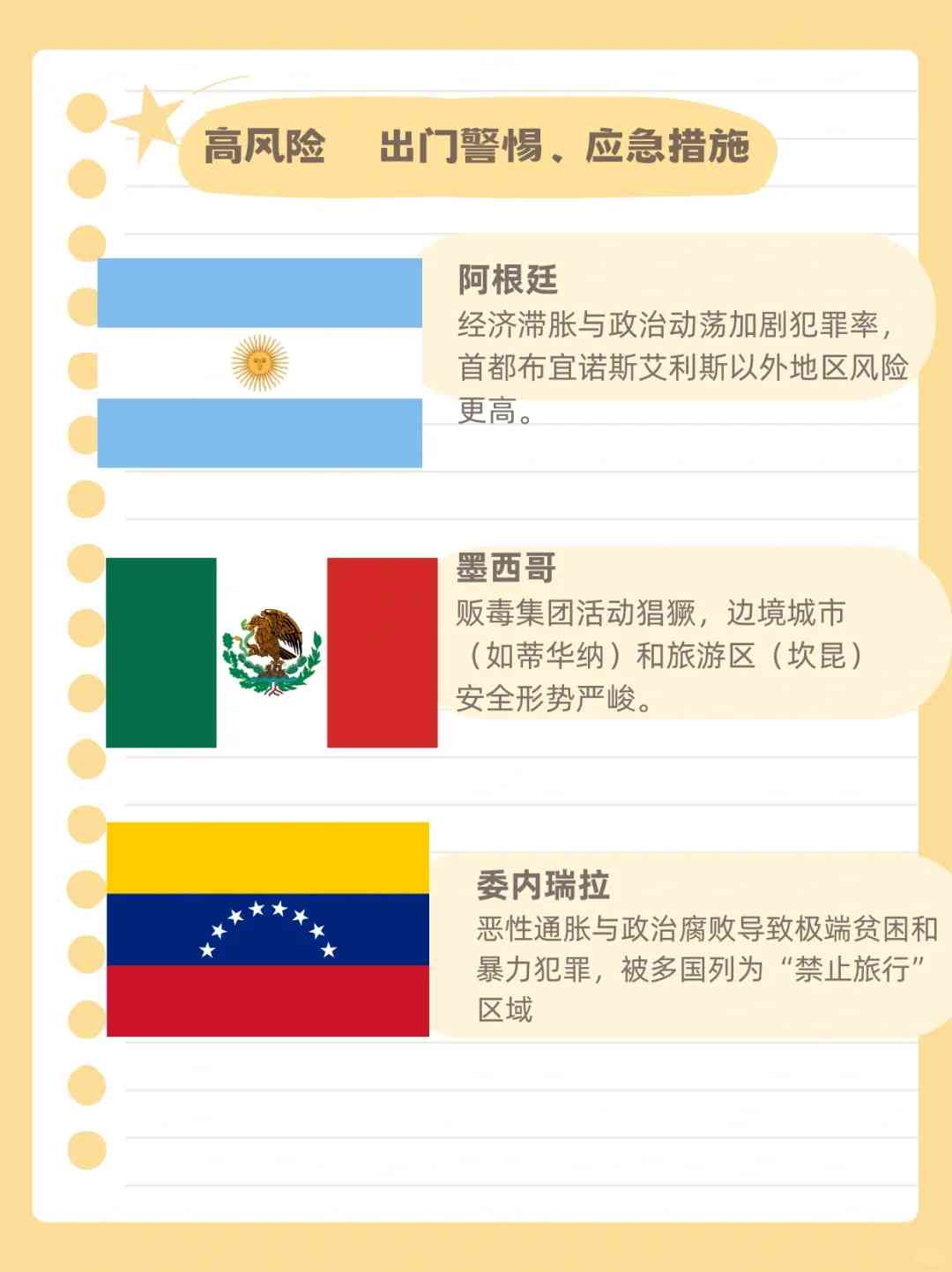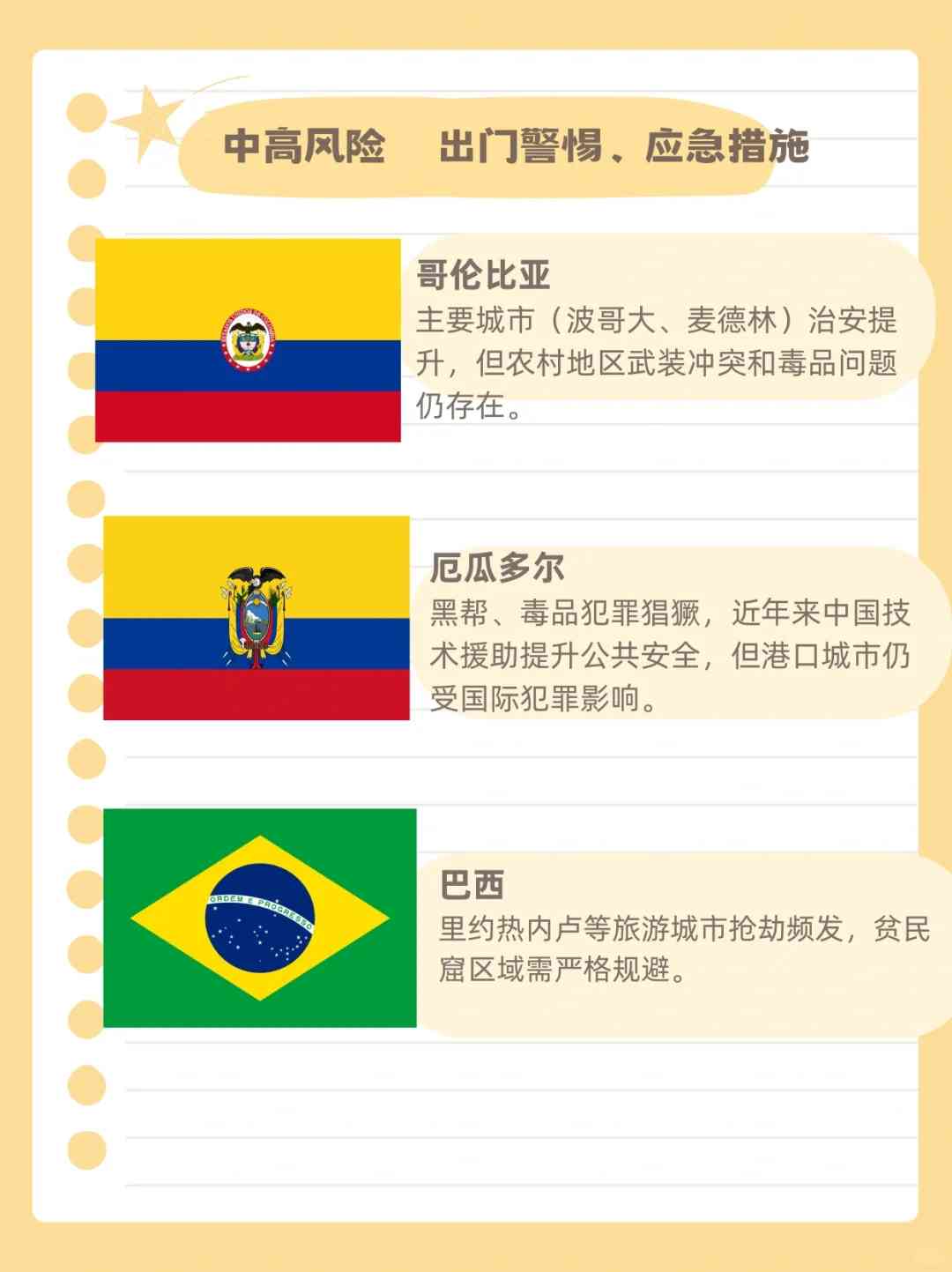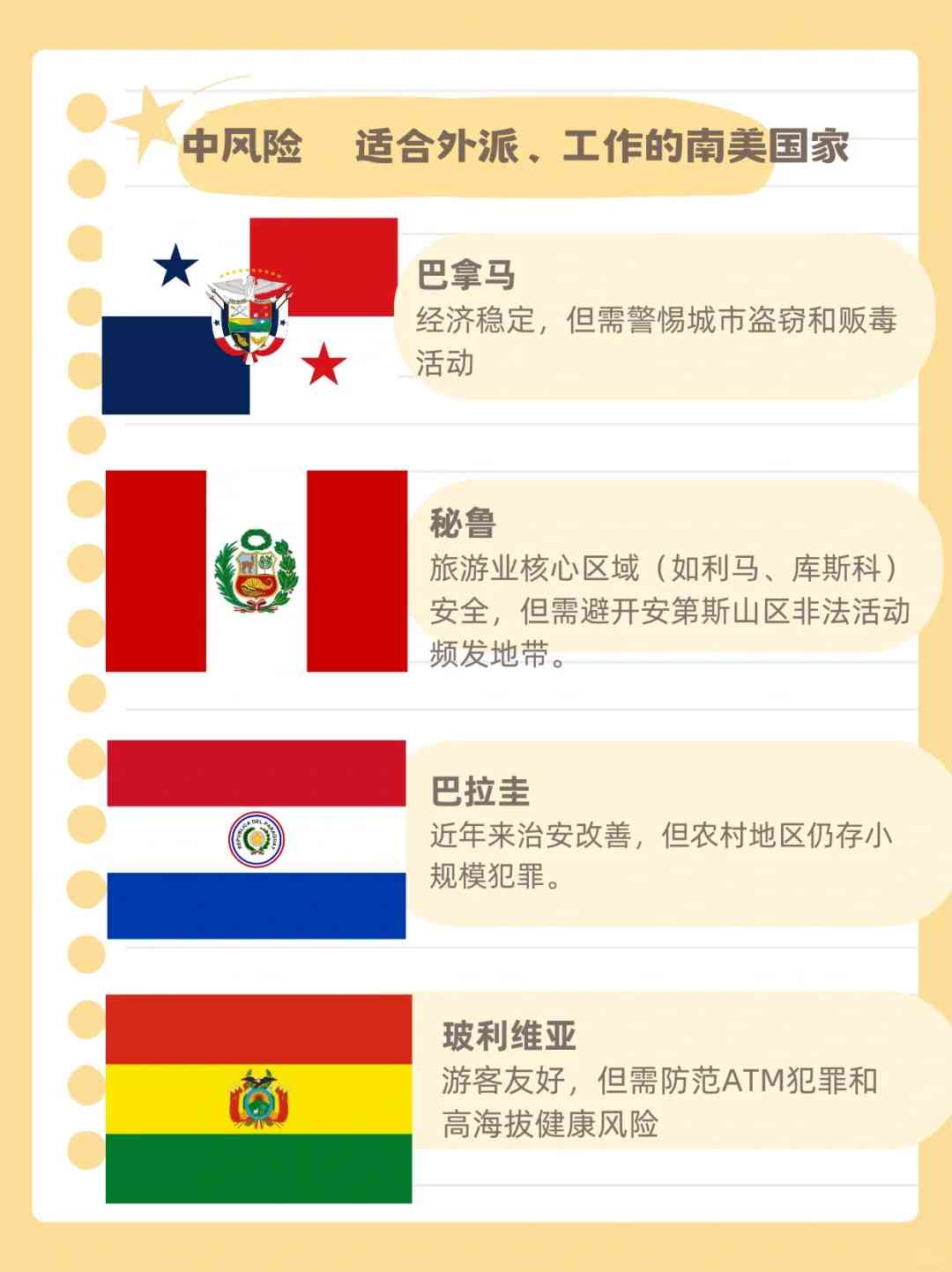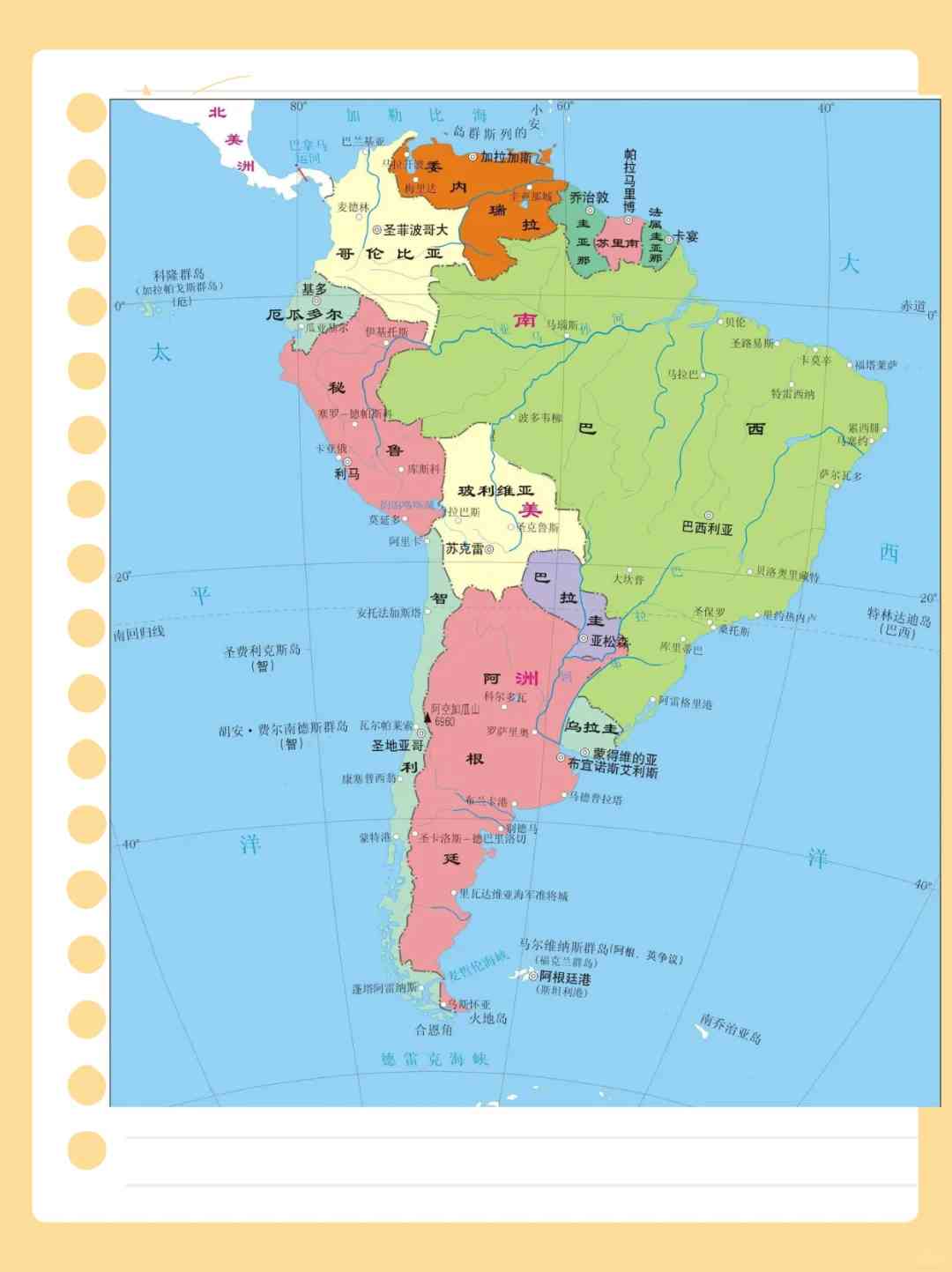How to Choose the Safest South American Countries for Travel in 2025?
Many people have reached out to me, curious about how to select the best overseas assignment and which countries are the safest. They also want to know which South American destinations are ideal for tourism. To help you make informed decisions, I’ve put together a comprehensive guide on the safety ratings of South American countries and industry selection tips, based on factors like political stability and public security.

**Low Risk:**
– **Uruguay:** Consistently ranked as one of the safest countries in South America, Uruguay boasts stable public security and low crime rates, especially in its capital, Montevideo.
– **Costa Rica:** Known for its high social stability, low political risk, and a thriving tourism industry, Costa Rica is a top choice for those seeking a safe and welcoming environment.

– **Chile:** While there may be medium to high risks during election cycles, major cities like Santiago remain relatively safe, making it a good option for both work and leisure.

**Medium Risk:**
– **Panama:** Economically stable, but visitors should be cautious of urban theft and drug trafficking, particularly in densely populated areas.
– **Peru:** Core tourist areas such as Lima and Cusco are generally safe, but it’s advisable to avoid regions in the Andes where illegal activities are more common.

– **Paraguay:** Public security has improved significantly in recent years, though small-scale crimes still occur in rural areas, so it’s best to stay vigilant.
– **Bolivia:** A tourist-friendly destination, but travelers should be cautious of ATM crimes and health risks at high altitudes, especially in La Paz and other mountainous regions.

**Medium to High Risk:**
– **Colombia:** Major cities like Bogotá and Medellín have seen improvements in public security, but rural areas still face challenges with armed conflicts and drug-related issues.
– **Ecuador:** With Chinese technical assistance, public safety has improved, but port cities are still influenced by international criminal groups, so it’s important to stay informed and cautious.
– **Brazil:** Tourist cities like Rio de Janeiro experience frequent robberies, and favelas should be strictly avoided due to high levels of violence and crime.
**High Risk:**
– **Argentina:** Economic stagnation and political instability have led to increased crime rates, with higher risks outside the capital, Buenos Aires.
– **Mexico:** Drug cartels are rampant, and border cities like Tijuana and popular tourist areas such as Cancún have significant safety concerns.
– **Venezuela:** Hyperinflation and political corruption have resulted in extreme poverty and violent crime, making it a “do not travel” area for many countries.
**How to Choose an Overseas Assignment Offer?**
1. **Low Risk:** Prioritize sustainable industries, such as agricultural technology in Uruguay or eco-tourism in Costa Rica, which are suitable for long-term residence and offer a high quality of life.
2. **Medium Risk:** Opt for special economic zones or capitals, like Lima in Peru or the Colón Free Trade Zone in Panama.
Avoid traveling during sensitive periods, such as presidential election seasons, to minimize potential disruptions.
3. **High Risk:** Consider a “short-term rotation + remote support” model, and ensure you have robust insurance coverage, including accident, kidnapping, and medical evacuation services.
Additionally, avoid going out at night to reduce the risk of encountering dangerous situations.
Stay tuned for the next episode, where we will delve into how to choose an overseas assignment, explore industries with potential, and provide essential tips for signing a contract.

